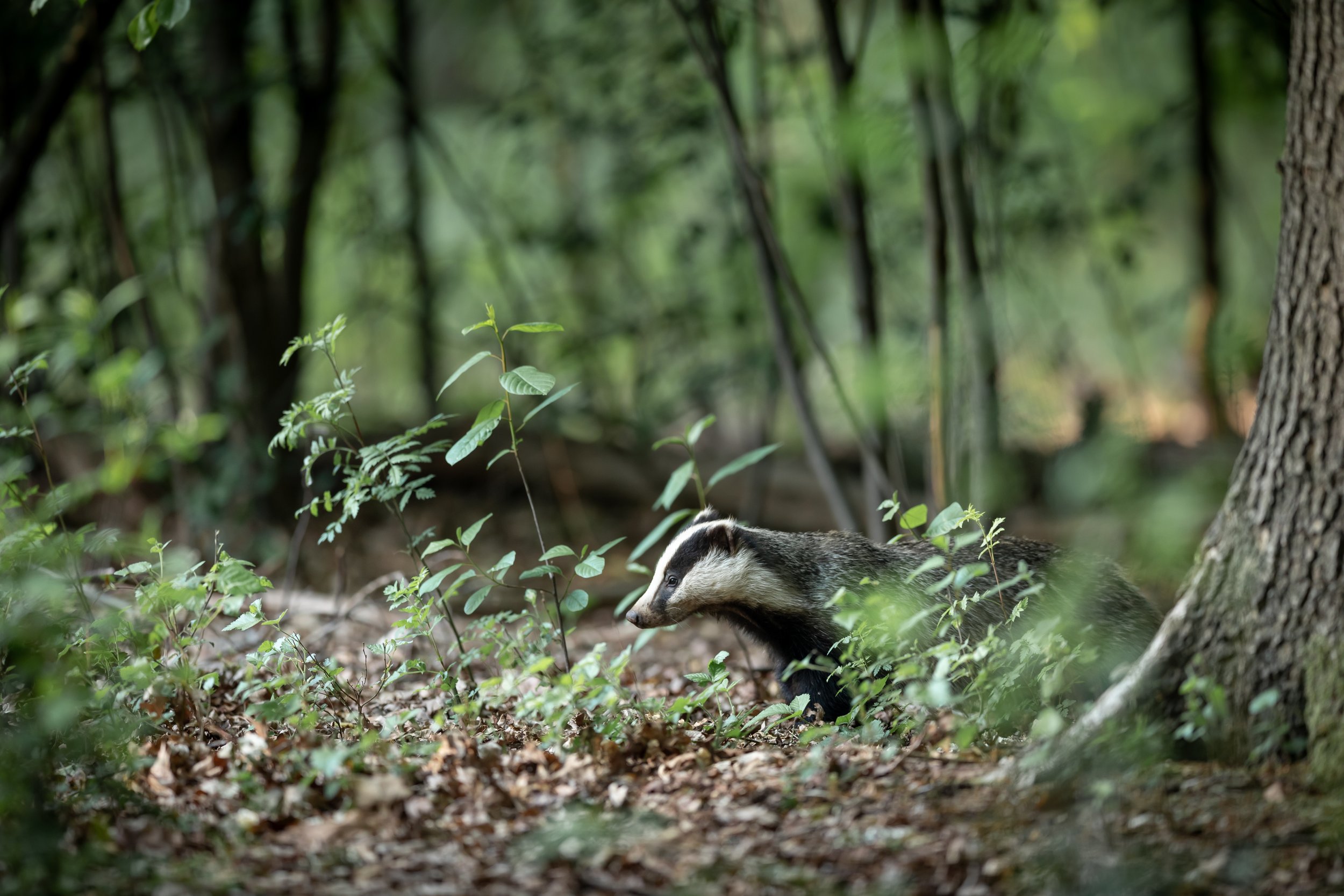Badgers and Development
Introduction
Badgers Meles meles are fascinating, largely nocturnal mammals that are members of the Mustelidae family. They can be found in a variety of habitats from rural woodland and farmland to urban gardens in bustling cities like London. Badgers can live for up to fifteen years, but in the wild this is often as little as three years.
They are the biggest land predator in the UK and can grow to between 90cm to 1m in length, with sharp claws for digging as well as a very strong jaw. Scent is extremely important for badgers, and they use it to communicate warnings or mating status. Badgers also dig shallow pits called latrines in which they defecate to delineate their territory through depositing scent within their faeces.
Although they have an excellent sense of smell and good hearing, their eyesight is relatively poor because they’re nocturnal. This can lead them to be killed in road traffic collisions, especially during their most active season (late winter/early spring) where they travel greater distances.
Badgers are omnivores that will eat slugs, beetle larvae, berries, bird eggs and snails, but ultimately rely heavily on earth worms (up to 80% of their diet). It is a common misconception that hedgehogs are a regular part of a badger’s diet, as they in fact live harmoniously most of the time, with badgers only resorting to eating hedgehogs when other food sources are scarce. Although badgers live together in social groups they forage separately.
Unlike bats, hazel dormice and hedgehogs, badgers don’t truly hibernate over winter, but will reduce their activity during cold weather to conserve their energy.
Setts and Breeding
Badgers are social animals that live in groups of four to eight within their setts, and these are called clans.
Setts include a network of dug out underground tunnels with nesting chambers which they fill with dry bedding (grass or leaves) to keep them warm. Badgers spend most time around the main sett which is the breeding centre for the clan. These are extensive, with up to 50 entrances and are sometimes passed down through generations of a clan. They also use annexe setts which are some distance from the main sett but still connected, and occasionally use outlier setts which are much smaller, some distance away, and not connected to the main sett.
Badgers reach sexual maturity around 11 to 15 months old. They mate at any time of the year but only have one litter a year (usually in February) due to something called delayed implantation. A litter may have up to five cubs or as little as one.
Badger Protection and the Law
Badgers and their setts are protected by law. They are afforded protection in Britain under the Protection of Badgers Act (1992), and Schedule 6 of the Wildlife and Countryside Act 1981 (as amended). Breaching these laws can incur a fine and up to a 6-month prison sentence.
Badger Surveys and Licencing
Where development is planned it is important that surveys are carried out to check if badgers are present on the application site or nearby, and if so, map out any setts.
Initially, a badger walkover is carried out (normally as part of a Preliminary Ecological Appraisal) which includes surveyors searching for badger setts, latrines, foraging marks, footprints and worn pathways, and trapped hairs on fences, with special attention paid to linear features.
Any setts that are identified as part of this survey are then subject to on-going monitoring during other survey visits to determine the type of sett and current occupation by badgers. Where necessary, motion sensitive cameras ‘trail cams, or other non-intrusive methods (e.g. laying soft damp sand, placing dead leaves or straw or sticky hair traps at entrances) are used to confirm occupation by badgers. Badger hairs are black and white and will not roll easily between your fingers due to their coarse texture.
Badger survey data between 12 to 18 months will usually be valid for planning, but councils may require a repeat walkover immediately prior to the commencement of works to ensure this data is up-to-date and there is no risk of harm to badgers. These surveys should always be undertaken by suitably qualified and trained ecologists.
Should a development need to impact a badger sett then a CL35: licence to interfere with setts will be required from Natural England. Note that the licence can only be used between 1st July and 30th November.
This article was written by Emma Baker
Resources:
https://www.badgertrust.org.uk/why-are-badgers-protected-by-law
https://www.gov.uk/guidance/badgers-protection-surveys-and-licences
https://www.wildlifetrusts.org/wildlife-explorer/mammals/european-badger


